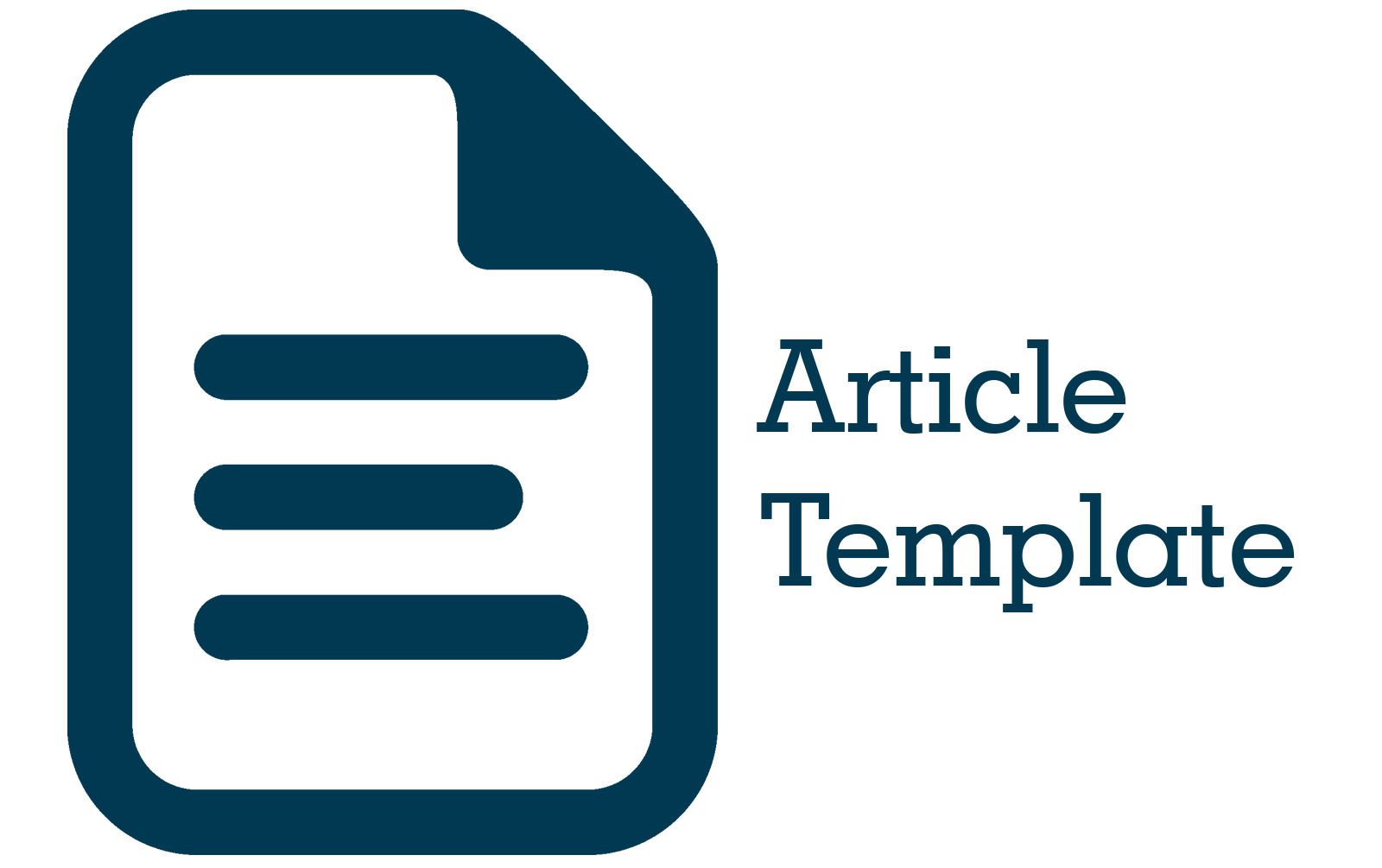Formulasi Nanogel Kurkumin Berbasis Alginat Dialdehid
Abstract
Abstract. Breast cancer is one of the leading causes of death among women in Indonesia. Current chemotherapy treatments often cause toxicity and have low drug bioavailability. This study aims to develop a curcumin nanogel formulation based on dialdehyde alginate as an alternative therapy for breast cancer. Curcumin, which possesses antioxidant and anticancer activities, was formulated using a nanoemulsion encapsulation technique. Dialdehyde alginate obtained through an oxidation process was used to enhance gel stability. The nanogel was evaluated based on particle size, polydispersity index (PDI), and zeta potential. The results showed that the best formula produced particle sizes below 1000 nm (polymeric nanoparticles), PDI values < 0.5, and a zeta potential approaching ±30 mV. The drug release system was controlled, potentially improving the effectiveness of cancer therapy. This nanogel formulation offers an innovative natural-based approach utilizing nanotechnology to overcome the limitations of chemotherapy. Furthermore, this formulation provides advantages such as high penetration, biocompatibility, and biodegradability, making it safe for topical applications. With promising evaluation results, this study makes a significant contribution to the development of nanotechnology-based pharmaceutical preparations, offering a more effective and safer alternative therapy for cancer in the future.
Abstrak. Kanker payudara merupakan salah satu penyebab utama kematian pada wanita di Indonesia. Pengobatan kemoterapi yang tersedia saat ini sering menimbulkan toksisitas dan memiliki bioavailabilitas obat yang rendah. Penelitian ini bertujuan untuk mengembangkan formulasi nanogel kurkumin berbasis alginat dialdehid sebagai alternatif terapi kanker payudara. Kurkumin, yang memiliki aktivitas antioksidan dan antikanker, diformulasikan menggunakan teknik enkapsulasi nanoemulsi. Alginat dialdehid yang diperoleh melalui proses oksidasi digunakan untuk meningkatkan stabilitas gel. Evaluasi nanogel meliputi analisis ukuran partikel, indeks polidispersitas (PDI), dan zeta potensial. Hasil penelitian menunjukkan bahwa formula terbaik menghasilkan ukuran partikel di bawah 1000 nm (nanopartikel polimerik), nilai PDI < 0,5, dan zeta potensial mendekati ±30 mV. Sistem pelepasan obat berlangsung secara terkendali, yang diharapkan mampu meningkatkan efektivitas terapi kanker. Formulasi nanogel ini menawarkan pendekatan inovatif berbasis bahan alam dengan memanfaatkan teknologi nanoteknologi untuk mengatasi keterbatasan pengobatan kemoterapi. Selain itu, formulasi ini memiliki keunggulan berupa penetrasi tinggi, biokompatibilitas, dan biodegradabilitas yang membuatnya aman untuk aplikasi topikal. Dengan hasil evaluasi yang menjanjikan, penelitian ini memberikan kontribusi penting dalam pengembangan sediaan farmasi berbasis nanoteknologi, sehingga diharapkan dapat menjadi alternatif terapi kanker yang lebih efektif dan aman di masa mendatang.
References
American Cancer Society. (2017). Cancer Treatment and Survivorship Facts and Figures 2016-2017. American Cancer Society, Atlanta.
Anggraini, W., Sagita, E., & Iskandarsyah, I. (2017). Effect of hydrophilicity surfactants toward characterization and in vitro transfersomes penetration in gels using Franz diffusion test. International Journal of Applied Pharmaceutics, 9, 112–115. https://doi.org/10.22159/ijap.2017.v9s1.67_74
Arofik, H. N., & Bayyinatul Muchtaromah. (2023). Aplikasi Teknologi Nanopartikel Pada Pengobatan Kanker. ULIL ALBAB: Jurnal Ilmiah Multidisiplin, 2(4), 1578–1585.
Ariani, L. W., & Wulandari. (2022). Stabilitas Fisik Nanogel Minyak Zaitun (Olea europaeae L.). Jurnal Ilmiah Cendekia Eksakta, 5(2), 101–108.
Eni Susilawati, & Budi P. Soewondo. (2022). Pengaruh Nanoenkapsulasi pada Aktivitas Senyawa yang Berpotensi sebagai Antioksidan. Jurnal Riset Farmasi, 1–8. https://doi.org/10.29313/jrf.v2i1.692
Fitrah, M. (2016). Identifikasi ekstrak daun kopasanda (Chromolaena odorada Linn) terhadap sel antiproliferasi tikus leukemia L1210. Jf Fik Uinam, 4(3), 99–105.
Giordano, A., & Tommonaro, G. (2019). Curcumin and cancer. Nutrients, 11(10). https://doi.org/10.3390/nu11102376
Indrawati, Y., & Amoryna, D. (2023). Inovasi Centrifuge Alternatif dari Motor Kipas Angin untuk Preparasi Pengujian Berbagai Sampel di Laboratorium. Indonesian Journal of Laboratory, 1(2), 106. https://doi.org/10.22146/ijl.v1i2.84988
Klontzas, M. E., Reakasame, S., Silva, R., Morais, J. C. F., Vernardis, S., MacFarlane, R. J., Heliotis, M., Tsiridis, E., Panoskaltsis, N., Boccaccini, A. R., & Mantalaris, A. (2019). Oxidized alginate hydrogels with the GHK peptide enhance cord blood mesenchymal stem cell osteogenesis: A paradigm for metabolomics-based evaluation of biomaterial design. Acta Biomaterialia, 88, 224–240. https://doi.org/10.1016/j.actbio.2019.02.017
Li, P., Luo, Z., Liu, P., Gao, N., Zhang, Y., Pan, H., Liu, L., Wang, C., Cai, L., & Ma, Y. (2013). Bioreducible alginate-poly(ethylenimine) nanogels as an antigen-delivery system robustly enhance vaccine-elicited humoral and cellular immune responses. Journal of Controlled Release, 168(3), 271–279. https://doi.org/10.1016/j.jconrel.2013.03.025
Mailani, F. (2023). Terapi Komplomenter Dalam Keperawatan. CV. Eureka Media Aksara, 91. https://medium.com/@arifwicaksanaa/pengertian-use-case-a7e576e1b6bf
Moayedi, H., & Kazemian, S. (2013). Zeta Potentials of Suspended Humus in Multivalent Cationic Saline Solution and Its Effect on Electro-Osomosis Behavior. Journal of Dispersion Science and Technology, 34(2), 283–294. https://doi.org/10.1080/01932691.2011.646601
Nuraeni, W., Daruwati, I., W., E. M., & Sriyani, M. E. (2013). Verifikasi Kinerja Alat Particle size analyzer (PSA) Horiba Lb-550 Untuk Penentuan Distribusi Ukuran Nanopartikel. Prosiding Seminar Nasional Sains Dan Teknologi Nuklir, 266–271.
Ramdhan, T., Ching, S. H., Prakash, S., & Bhandari, B. (2020). Physical and mechanical properties of alginate based composite gels. Trends in Food Science and Technology, 106(February 2019), 150–159. https://doi.org/10.1016/j.tifs.2020.10.002
Reakasame, S., & Boccaccini, A. R. (2018). Oxidized Alginate-Based Hydrogels for Tissue Engineering Applications: A Review. Biomacromolecules, 19(1), 3–21. https://doi.org/10.1021/acs.biomac.7b01331
Roihatul Mutiah. (2015). 21 20 6 ). Jurma, 1(1), 28–41. https://ejournal.uin-malang.ac.id/index.php/jip/article/view/4178/5588
Sindhu, R. K., Gupta, R., Wadhera, G., & Kumar, P. (2022). Modern Herbal Nanogels: Formulation, Delivery Methods, and Applications. Gels, 8(2), 1–23. https://doi.org/10.3390/gels8020097
Sugiharto, S., Ariff, A., Ahmad, S., & Hamid, M. (2012). Efektivitas kurkumin sebagai antioksidan dan inhibitor melanin pada kultur sel B16F1. Journal of Biological Researches, 17(2), 173–176.
Yin, Y., Hu, B., Yuan, X., Cai, L., Gao, H., & Yang, Q. (2020). Nanogel: A versatile nano-delivery system for biomedical applications. Pharmaceutics, 12(3). https://doi.org/10.3390/pharmaceutics12030290











